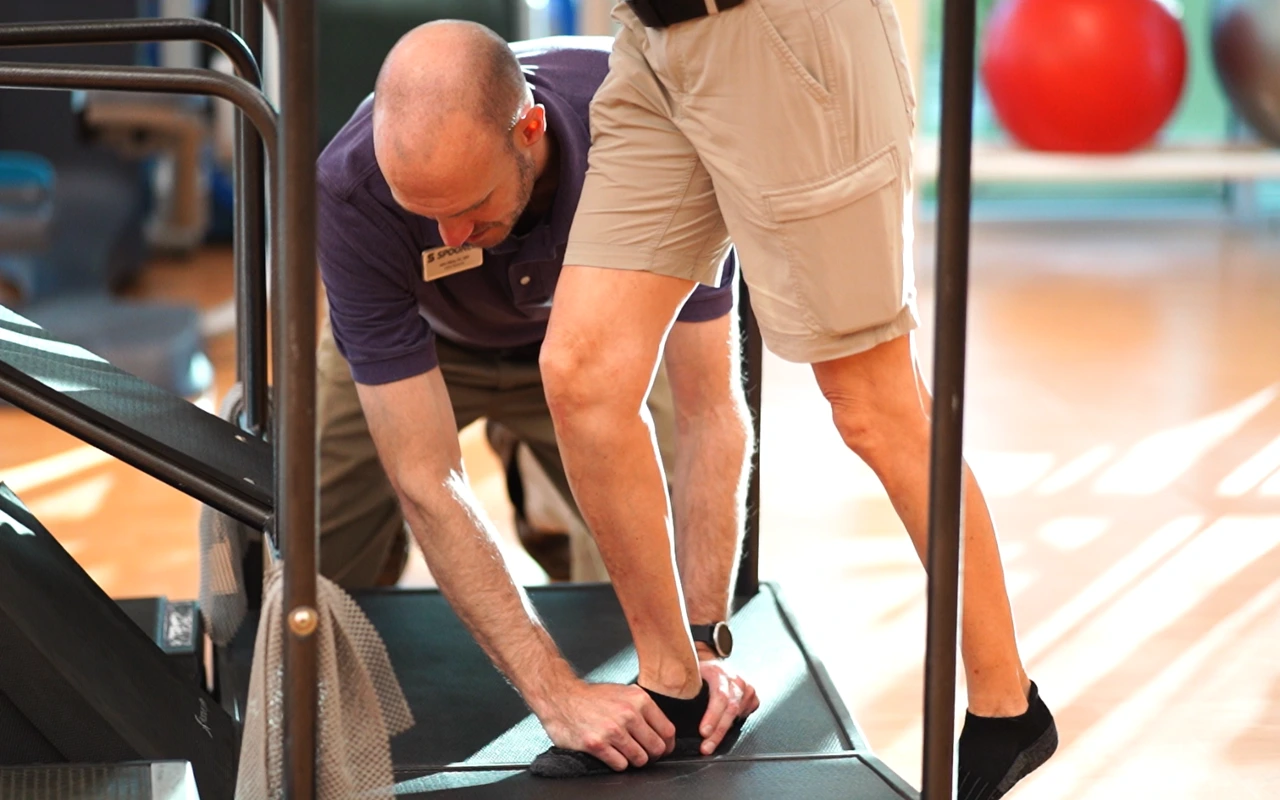By: Torrey Foster, PT, DPT, OCS, FAFS, CSCS, and John Kline, PT, DPT, CSCS, FAFS
The plantar fascia is dense connective tissue at the bottom of your foot that runs from the base of your toes all the way to your heel. It helps you have an arch when you walk.
Your plantar fascia and Achilles tendon are attached at the same point- at the heel bone. They are so closely related that a dysfunction in the plantar fascia can easily affect your tendons and muscles up your body.
Symptoms of Plantar Fasciitis
Plantar fasciitis is inflammation of the plantar fascia. The hallmark of this condition is pain along the bottom of the heel. This pain is typically at its worst when you initially bear weight in the morning or during your first few steps after a long period of sitting since the tissue becomes incredibly tight. It may feel like you are stepping on a spike during your initial few steps.
As you bear weight, the pain may subside; however, depending on the case, you may experience a recurrence of pain after standing or walking for too long.
Other Injuries and Conditions
There are other injuries and conditions with similar symptoms that can mimic plantar fasciitis:
- Bone spurs under the heel
- Retrocalcaneal bursitis
- Bone bruise
Heel pain can limit your ability to walk, run, and perform other activities. Determining what is truly causing it can help you return to your daily activities more comfortably.
Physical Therapy for Plantar Fasciitis
Going to physical therapy first for your plantar fasciitis, before spending wasted time and money for imaging and/or medications, allows you to be proactive in your approach to healing. We want to make sure we are finding the true causes of the irritation and address them in as functional of a way as possible to help you move better and feel better.
Cortisone injections are one way to help the pain you may be experiencing, but this just treats the symptoms- not the cause of your plantar fasciitis. Treating the cause allows you to functionally heal as well as mitigate the risk of future recurrence.
There are multiple techniques physical therapists use to help reduce your pain so you can move and feel your best. We may use joint mobilizations, stretching, dry needling, or soft tissue mobilization- such as Astym®– to help loosen the tight tissue and to complement prescriptive exercises and functional recommendations.
Physical therapists will be with you every step of the way on your healing journey. They know how to effectively evaluate your needs, including assessing walking biomechanics and making recommendations on shoe wear depending on your foot type and gait pattern. Sometimes a change in shoe wear can be a simple, but important component to help lessen strain and irritation.
To learn more about your foot and walking mechanics, read “The Big Toe: Athletic Performance from the Ground Up.”
Each person is unique, and every case of plantar fasciitis that we treat will be individualized to her or his specific needs. Physical therapists are able to make functional recommendations to help ease your symptoms as well as identify and treat the root cause. Plantar fasciitis is one of those diagnoses where the root cause could be anywhere along your kinetic chain- from your big toe to further up your body than you probably realize. While you may be able to find treatment considerations online, it can be truly difficult to Google and determine the underlying cause of your plantar fasciitis without a physical therapist’s expertise.
If you are experiencing or have experienced plantar fasciitis, schedule an appointment with a Spooner therapist today to start moving better and feeling better!

